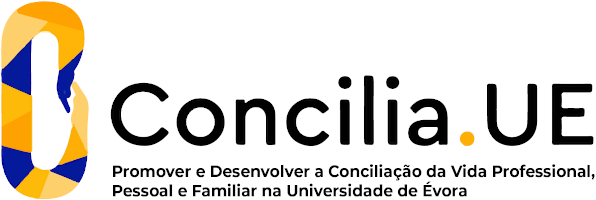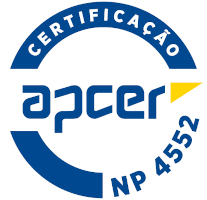2025
Experimental Models in Biomedicine
Name: Experimental Models in Biomedicine
Code: CMS14314L
3 ECTS
Duration: 15 weeks/78 hours
Scientific Area:
Biomedical Sciences
Teaching languages: Portuguese
Languages of tutoring support: Portuguese, English
Regime de Frequência: Presencial
Presentation
Study of experimental models used in biomedicine, their advantages and limitations; and legislation regulating the use of experimental animals.
Sustainable Development Goals
Learning Goals
Based on the rule of 3 Rs, the objectives of this UC are structured around the deepening of knowledge regarding each of them:
-Replacement: what alternative models to animals can be used in biomedicine?
-Reduction: in need of using animals, how to reduce their number?
-Refinement: how to reduce the degree of severity and pain inflicted on animals in experimentation? In the end, the student should be able to, within the scope of biomedical research:
- Recognize the importance of using experimental models;
- Identify different types of experimental models;
- List advantages and disadvantages in using different experimental models;
- Make informed decisions regarding the choice of a particular model based on the specific objective of each research project and taking into account current legislation;
- Develop a study design proposing an experimental model, based on a scientific research question.
-Replacement: what alternative models to animals can be used in biomedicine?
-Reduction: in need of using animals, how to reduce their number?
-Refinement: how to reduce the degree of severity and pain inflicted on animals in experimentation? In the end, the student should be able to, within the scope of biomedical research:
- Recognize the importance of using experimental models;
- Identify different types of experimental models;
- List advantages and disadvantages in using different experimental models;
- Make informed decisions regarding the choice of a particular model based on the specific objective of each research project and taking into account current legislation;
- Develop a study design proposing an experimental model, based on a scientific research question.
Contents
- Experimental models in biomedical sciences - advantages and limitations.
- The rule of 3Rs in the use of biological models in biomedicine - scope.
- Replacement - alternative models to animals - Models "in silico"; in vitro models; cell models (cell lines; organoids; xenotransplants); "ex vivo" models.
- Reduction - strategies to reduce the number of animals in experimentation - bibliographic research; relevance of the publication of results; criteria for choosing a particular experimental animal model; experimental design; statistical analysis. Some examples.
- Refinement - the object of laboratory animal science; relevance of improving housing conditions for animals; anaesthesia and analgesia in experimentation; definition of experimental end points.
- Legislation regulating the use of experimental animals.
- The rule of 3Rs in the use of biological models in biomedicine - scope.
- Replacement - alternative models to animals - Models "in silico"; in vitro models; cell models (cell lines; organoids; xenotransplants); "ex vivo" models.
- Reduction - strategies to reduce the number of animals in experimentation - bibliographic research; relevance of the publication of results; criteria for choosing a particular experimental animal model; experimental design; statistical analysis. Some examples.
- Refinement - the object of laboratory animal science; relevance of improving housing conditions for animals; anaesthesia and analgesia in experimentation; definition of experimental end points.
- Legislation regulating the use of experimental animals.
Teaching Methods
Active methodologies in which students collaboratively build solid knowledge about the different experimental models that can be used in Biomedicine (T-12h); Seminars developed as debate sessions on certain programmatic points (S-4h); Elaboration, in group, of a work presenting a study design with the proposal of an experimental model, based on a biomedical research question (TP-12h).
Assessment
The final grade of the course unit results from the weighted average of the different components.
Continuous assessment:
a) The organization and participation in seminars (S) account for 15% of the final grade, valuing the active involvement of students in these sessions.
b) The written paper (TE) represents 20%, complemented by its oral presentation (AO), also weighted at 20%, encouraging communication skills and the ability to defend the work carried out.
c) Continuous assessment (AC) conducted in theoretical classes contributes 25% of the grade, considering attendance, the quality of presentations, and participation in debates.
d) Finally, the written final exam (E) corresponds to 20% of the overall grade.
In this way, the final grade reflects a balanced weighting between active participation in different activities, scientific production, and knowledge assessment, promoting continuous and diversified learning.
NF= S*0.15 + TE*0.15 + AO*0.15 + AC*0.25 + E*0.2
Examination assessment:
Examination assessment will consist of a written test to be taken during the exam period defined in the academic calendar, covering all the material taught. The final grade will be calculated based on the weighted average of the marks obtained in the written exam (60%) and the grade obtained through continuous assessment of the theoretical-practical component, corresponding to the written paper (20%) and its presentation (20%).
NF= TE*0.2 + AO*0.2 + E*0.6
Continuous assessment:
a) The organization and participation in seminars (S) account for 15% of the final grade, valuing the active involvement of students in these sessions.
b) The written paper (TE) represents 20%, complemented by its oral presentation (AO), also weighted at 20%, encouraging communication skills and the ability to defend the work carried out.
c) Continuous assessment (AC) conducted in theoretical classes contributes 25% of the grade, considering attendance, the quality of presentations, and participation in debates.
d) Finally, the written final exam (E) corresponds to 20% of the overall grade.
In this way, the final grade reflects a balanced weighting between active participation in different activities, scientific production, and knowledge assessment, promoting continuous and diversified learning.
NF= S*0.15 + TE*0.15 + AO*0.15 + AC*0.25 + E*0.2
Examination assessment:
Examination assessment will consist of a written test to be taken during the exam period defined in the academic calendar, covering all the material taught. The final grade will be calculated based on the weighted average of the marks obtained in the written exam (60%) and the grade obtained through continuous assessment of the theoretical-practical component, corresponding to the written paper (20%) and its presentation (20%).
NF= TE*0.2 + AO*0.2 + E*0.6





















